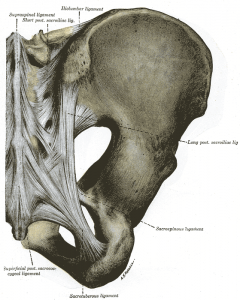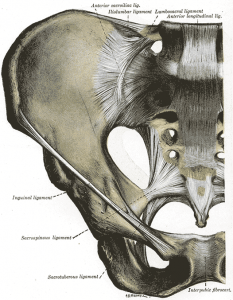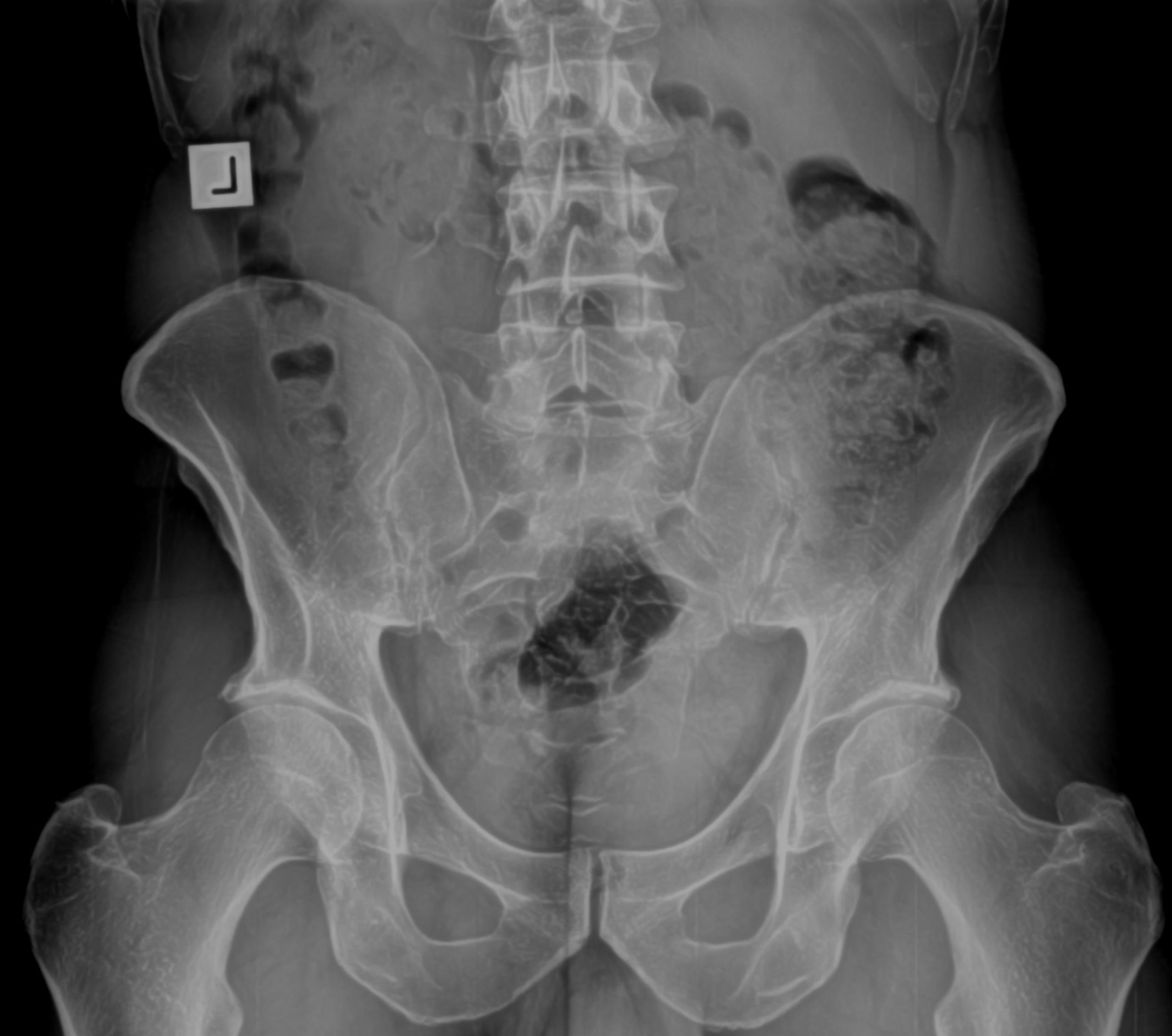Essential facts about the pelvis you need to know
The pelvis is an important area of our body which is very important in Chiropractic, and very important for the function of your body.
When we refer to the pelvis we are referring primarily to the joint at the base of the spine, which lies slightly off to the side. This joint is called the sacro-iliac joint (SIJ), and you can find it by putting your hands on your on you low back, then sliding sideways towards your waist.

The sacro-iliac joint (SIJ) consists of the sacrum (the large central triangular bone), and ilium (the large pelvis bone) on the outside. The sacro-iliac joint is important because it essentially forms the base of the spine – the next weight bearing joints above are the lumbar spine (low back), and sacro-iliac joint dysfunction can have effects upwards into the low back, mid back, and neck, and downwards into the knee and ankle.
At the front of the pelvis is the pubic symphysis, the anterior (front) connection of the pelvis. The leg bone joins the pelvis at the hip joint.
The shape of male and female pelvis is different, and the pelvis in females is important for pregnancy and labour. In pregnancy a hormorne called Relaxin is produced that relaxes the ligaments of the pelvis, creating space for your growing baby!
There is an important network of ligaments, which lie at the front and back of the pelvis. These ligaments are very important in Chiropractic, as weakness, tension, or trauma to the ligaments affects function of the joint. Between some of these ligaments passes muscle and nerves, which when compressed can affect local function.

Function of local muscles can be affected by the function of the pelvis, creating pelvis pain or hip pain. These muscle include the large buttock muscles (the “glutes”), the outer leg and hips muscles, and the muscles at the front of the pelvis. Dysfunction in all these regions can lead to pelvis pain at the front, side or back.
Furthermore, the are important nerves and arteries passing through these regions. These include the large sciatic nerve, which runs down the leg, and controls movement of the leg.
The results of problems in the pelvic region may include:
- buttock pain
- groin pain
- tight muscles of the low back
- stiffness of the low back joints
- inflammation
- degeneration of the sacro-iliac joint.

The objective of chiropractic is to correct joint dysfunction (subluxation). The use of x-ray can be important in chiropractic management, especially with the gonstead system, which aims for specific identification of the biomechanics of a sacro-iliac issue, and precise correction.
Once the specific nature of the Sacro-iliac subluxation is identified, the adjustment can then proceed. The goal is precise correction of the subluxation to restore normal function.
Our practice is results driven, dedicated to the service of you and your family.
References:
https://www.kenhub.com/en/library/anatomy/sacroiliac-joint




